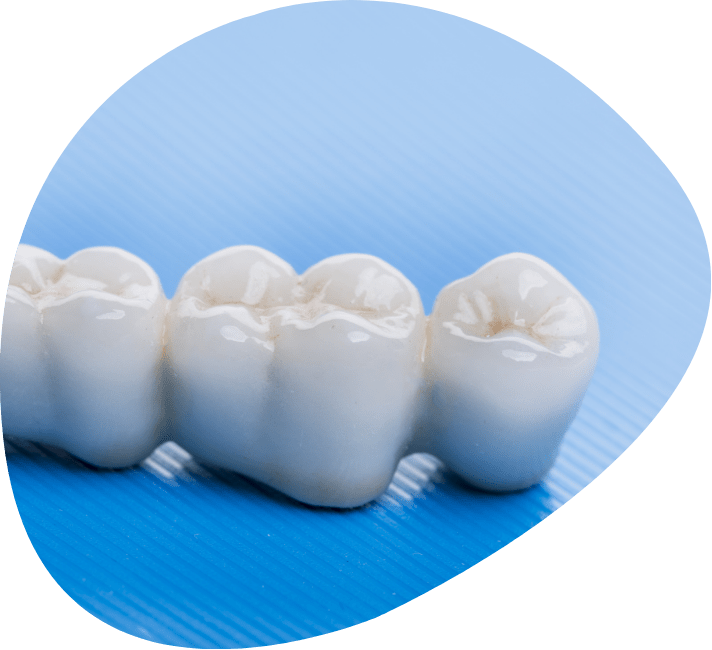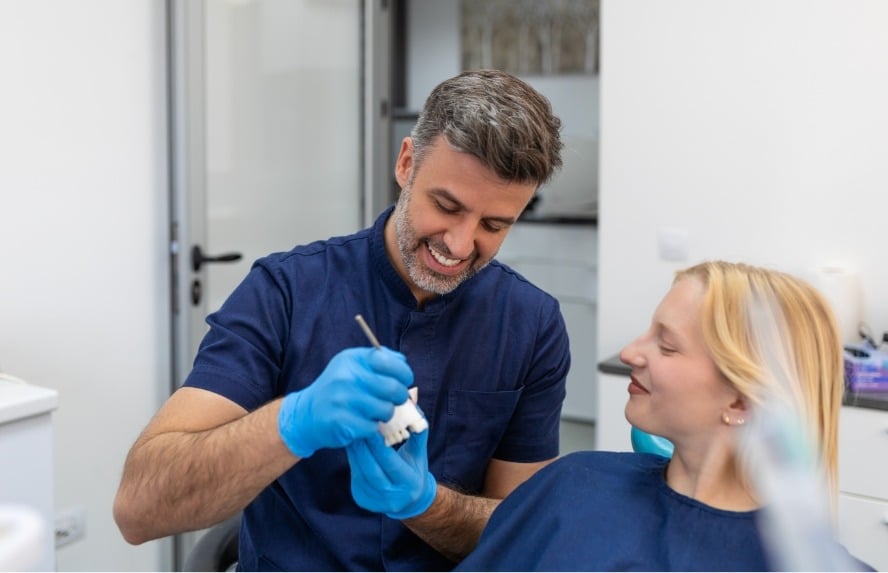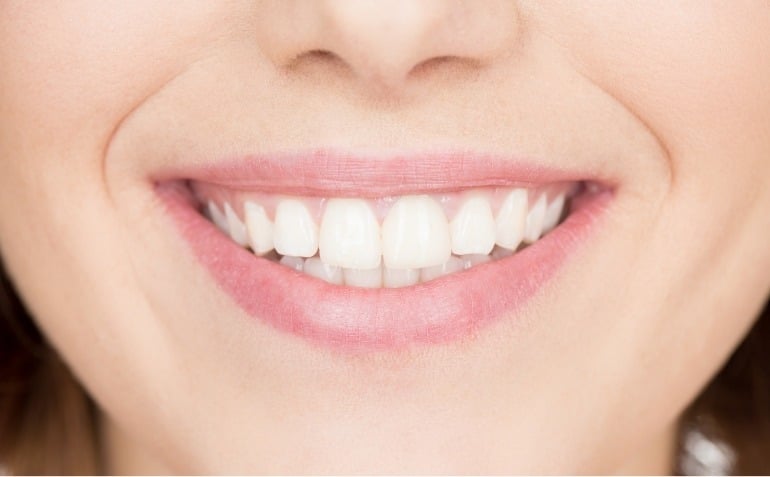Crown and bridge

Although strong, teeth can deteriorate greatly, sometimes to the point of falling out or having to be removed. When this happens, and a badly damaged tooth or empty space is present in the mouth, other problems are likely to develop. That's why it's also important to proceed with restoration or replacement, depending on the situation. We offer two suitable solutions: crowns and bridges.


Crowns: restoring damaged teeth
- Further deterioration of the tooth, leading to its loss;
- The development of deep-seated infections that can spread to adjacent tissues;
- Premature wear of the corresponding tooth due to the abrasive nature of the damaged tooth;
- Difficulty chewing certain foods.
The bridge: a simple tooth replacement
A bridge replaces a missing tooth (sometimes two) located between healthy teeth. It not only restores the functional and visual capacity of the dentition, but also prevents adjacent teeth from moving into the empty space and destabilizing the corresponding tooth. Bridges are generally made of a mixture of metal and ceramic. It consists of two parts: the pontic, i.e. the replacement tooth (or teeth), and the abutments, i.e. the supporting teeth on which crowns are fixed.


A two-appointment procedure
First appointment : we begin by preparing the tooth or teeth that will receive a crown. Friable areas are removed to ensure better adhesion of the restoration. The dentist then takes impressions to design the crown or bridge, and a temporary piece is installed to protect the surrounding teeth and tissues.
Second appointment : the crown is cemented onto the tooth from which the temporary restoration has been removed. In the case of a bridge, it's best to attach it to the two previously prepared teeth.
Crown or bridge: a complete restoration process under one roof!
